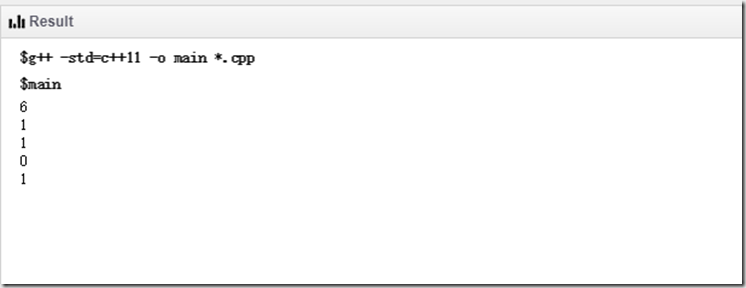C++函数参数中的省略号
本文基本是转载自:https://blog.csdn.net/think12/article/details/5785066
另一篇看到写得很好的博客:https://www.cnblogs.com/haoyuanyuan/p/3221463.html
C++允许定义形参个数和类型不确定的函数。例如,C语言中的标准函数printf便使用这种机制。在声明不确定形参的函数时,形参部分可以使用省略号 “…”代替。“…”告诉编译器,在函数调用时不检查形参类型是否与实参类型相同,也不检查参数个数。
对于可变参数的函数,需要进行特殊的处理。首先需要引用 <stdarg.h> 头文件,然后利用va_list类型和va_start、va_arg、va_end 3个宏读取传递到函数中的参数值。
这 几个宏的定义如下(在 ANSI C 中):
type va_arg( va_list arg_ptr, type );
void va_end( va_list arg_ptr );
void va_start( va_list arg_ptr, prev_param );
说明如下:
va_start
sets arg_ptr to the first optional argument in the list of arguments passed to the function. The argument arg_ptr must have va_list type. The argument prev_param is the name of the required parameter immediately preceding the first optional argument in the argument list. If prev_param is declared with the register storage class, the macro’s behavior is undefined. va_start must be used before va_arg is used for the first time.
【 va_start函数将参数arg_ptr设置为可变参数列表的第一个参数。参数arg_ptr的类型必须为va_list。参数prev_param是 在可变参数列表之前的那一个参数。(也就是说在 ANSI C 中,如果一个函数有可变参数,那么在该可变参数前必须有一个明确定义的参数,否则无法调用函数 va_start ,例如函数 int add(int i,...)是合法的,而函数 int add(...)是不合法的。 )】
va_arg
retrieves a value of type from the location given by arg_ptr and increments arg_ptr to point to the next argument in the list, using the size of type to determine where the next argument starts. va_arg can be used any number of times within the function to retrieve arguments from the list.
【 va_arg函数将返回 arg_ptr 所指位置的值,并将 arg_ptr 指向下一个参数 】
va_end
After all arguments have been retrieved, va_end resets the pointer to NULL.
示例代码:
#include<cstdarg> #include<iostream> #include<string.h> using namespace std; int add(int pre,...) //求和函数 { va_list arg_ptr; int sum=0; int nArgValue; sum+=pre; va_start(arg_ptr,pre); do { nArgValue=va_arg(arg_ptr,int); sum+=nArgValue; }while(nArgValue!=0); //自定义结束条件是输入参数为0 va_end(arg_ptr); return sum; } bool start_with(const char *haystack, const char *needle) { if (NULL == haystack || NULL == needle) { return false; } const char *p = strstr(haystack, needle); if (p && p == haystack) return true; else return false; } bool start_with(const char *haystack,const char *prefix, const char *notprefix1, ...) { bool bStart = start_with(haystack, prefix); if (!bStart) { return false; //若不是以 prefix 结尾则返回false } bool bFlag = true; va_list arg_ptr; va_start(arg_ptr, notprefix1); while (0 != notprefix1) //自定义结束条件是输入参数为NULL { bStart = start_with(haystack, notprefix1); if (bStart) { bFlag = false; //若以 notprefix 结尾则返回false break; } notprefix1 = va_arg(arg_ptr,const char*); } va_end(arg_ptr); return bFlag; } int main() { cout<<add(1,2,3,0)<<endl; //必须以0结尾,因为参数列表结束的判断条件是读到0停止 cout << start_with("Chui.mid","C",NULL) << endl; cout << start_with("Chui.mid","C",NULL) << endl; cout << start_with("Chui.mid","C","Ch",NULL) << endl; cout << start_with("Chui.mid","C","CR",NULL) << endl; return 0; }
运行结果:
其中比较坑的一个地方在于没有办法判断是不是到了最后一个参数(没找到相关资料,若有大神知道如何判断,希望能分享一下),导致我在函数最后必须得添加一个参数用于判断到了最后一个参数。







